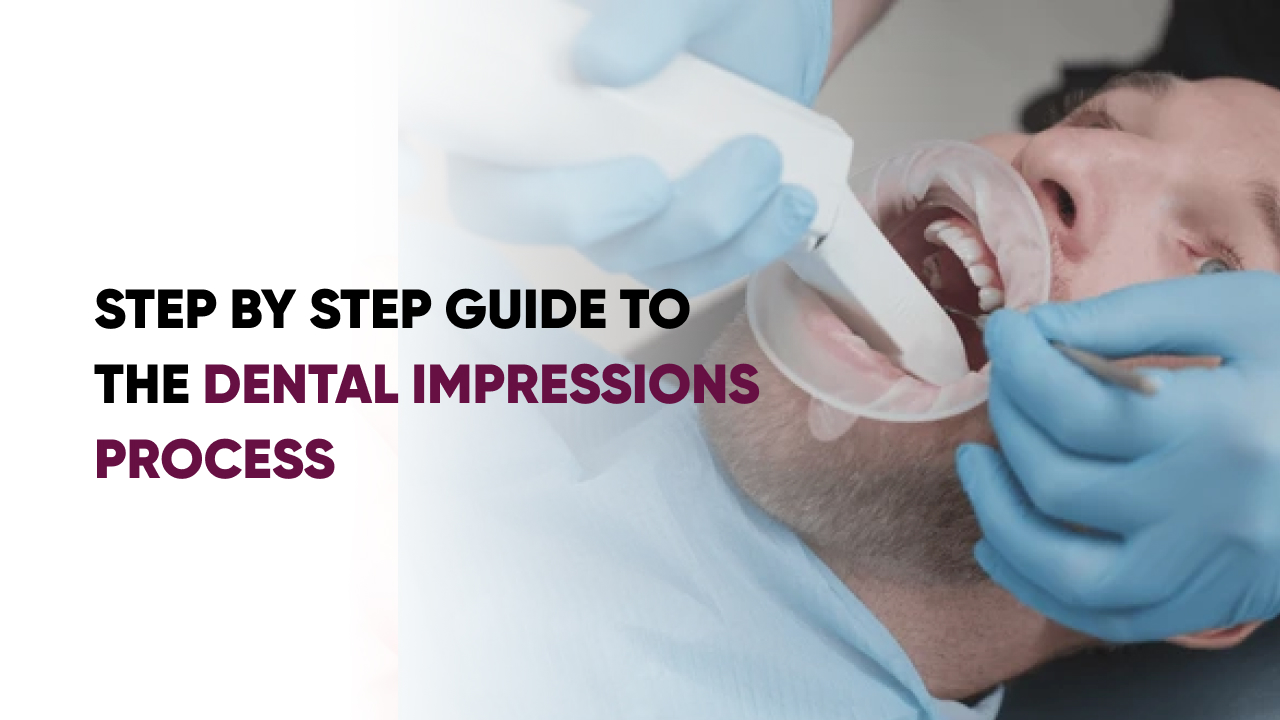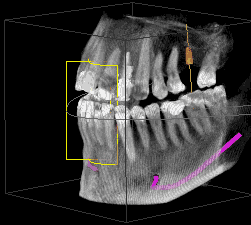
Impressions Made Easy
A Step-by-Step Guide!
“Podcast on this blog is Available Now!” →
Step by Step Guide to The Dental Impressions Process
Modern dental technology is so precise that it can capture every micro detail of your teeth, creating a perfect impression. Dental impressions are an essential tool that help dentists create tailored fit solutions like crowns, bridges, and aligners. Whether it’s diagnosing a problem or designing a custom treatment, dental impressions make it possible to achieve precision and comfort every time.
Whether you’re getting a major dental restoration or just a routine procedure, understanding dental impressions can help take the mystery out of the process. It may sound technical, but they’re actually a key part of creating personalized, effective dental care.
What Are Dental Impressions?
Dental impressions are specialized molds created to obtain precise negative replicas of a patient’s dental structures. These impressions capture detailed records of teeth, gums, and bite alignment using dental-grade impression materials. The resulting molds serve as critical diagnostic tools and templates for fabricating custom dental appliances.
When creating dental impressions, the impression material is applied to dental trays and positioned in the patient’s mouth. Upon setting, this material records micro details of dental anatomy, including tooth surfaces, gum contours, and bites. This level of precision is essential for designing and manufacturing properly fitted dental prosthetics, orthodontic appliances, and restorative solutions.
Read More: Six Common Myths About Clear Aligners Work?
Traditional vs. Digital Impressions
Modern dental practices have upgraded to digital technologies, however some still follow traditional techniques. Let’s explore how these two approaches compare;
Traditional Impression Technique
Traditional impression techniques involve a carefully designed process that begins with meticulous preparation. Your dentist will start by thoroughly cleaning and drying your teeth, ensuring a pristine surface for capturing the impression. Next, they carefully mix a specialized dental impression material. Once prepared, this material is strategically placed into a custom-sized dental tray specifically designed to match the contours of your mouth.
The dentist will then gently position the tray, guiding you to bite down and hold the position. During the next few minutes, you’ll need to stay still while the material sets. It transforms from a soft, malleable substance into a rigid mold that captures every tiny detail of your teeth and gum line. It might feel a little uncomfortable for a moment, but staying still is essential to get an accurate representation of your dental anatomy.
Digital Impression Technologies
Digital impression technologies represent an improved technology in dental diagnostics, utilizing advanced intraoral scanners that revolutionize how dentists capture oral anatomy. These latest devices are truly impressive, capturing multiple detailed images every second with speed and accuracy. As the scanner moves methodically through your mouth, it quickly creates a comprehensive 3D digital model that provides an unprecedented level of detail. Unlike traditional impression methods, these digital technologies eliminate the need for messy physical materials.
They provide a clean, comfortable alternative, especially for patients who feel anxious about traditional dental molds. The magic happens instantly: the digital model appears on-screen right after scanning, letting dentists review your oral structures in real-time. This technological innovation doesn’t just improve accuracy; it speeds up the dental process, cuts appointment times, and enhances patient comfort.
Read More: How Long Do Aligners Take to Work?
The Step-by-Step Dental Impression Process
Pre-Impression Preparation
Before taking a dental impression your dentist engages in a thorough preliminary assessment that ensures the most accurate and effective results. The first step is a thorough examination of your teeth, gums, and oral health. During this evaluation, the dentist meticulously determines the specific purpose of the impression.
Based on the assessment, they select the best impression method for your dental needs and anatomy. By taking the time to conduct this comprehensive pre-impression evaluation, your dentist ensures that the subsequent impression will be as precise and effective as possible, laying the groundwork for successful dental treatment.
Cleaning and Separation
The cleaning and separation phase is a critical precision step that sets the stage for a successful dental impression. Your dental professional will begin by thoroughly cleaning your teeth, removing any plaque, or surface irregularities that could potentially interfere with the impression’s accuracy. This meticulous cleaning ensures that every contour and detail of your teeth can be captured with utmost precision.
Following the cleaning, the dental team takes extraordinary care to dry the entire area, using specialized techniques to control moisture. Saliva and other oral fluids are strategically managed to create an optimal environment for impression taking. This moisture control is absolutely essential even a tiny droplet of saliva can distort the impression, potentially compromising the entire dental restoration process.
- Digital Scanning Preparation
Before the digital scanning begins, the dental team prepares the advanced intraoral scanner. Technicians calibrate the device, ensuring its precise measurements and optimal performance. The scanning wand is methodically positioned and checked, ready to capture a comprehensive digital map of your oral structures. This careful preparation guarantees that the technology will record every minute detail of your teeth and gums with exceptional accuracy, creating a reliable digital impression for your dental treatment.
Taking the Impression
During the digital impression process, a small, sophisticated scanning wand glides smoothly around your mouth, capturing multiple high-resolution images in rapid succession. This advanced technology creates a comprehensive digital map of your oral structures, methodically recording every minute detail with exceptional precision. The entire scanning procedure is remarkably swift and comfortable, eliminating the need for traditional messy impression materials and providing an almost instantaneous 3D representation of your teeth and gums.
Impression Verification
After capturing the dental impression, the dentist performs a critical verification process to ensure absolute precision. With a trained eye, they carefully examine the impression, checking for complete and accurate representation of all teeth and oral structures. The professional meticulously scrutinizes the model for any potential imperfections, such as air bubbles or subtle distortions that could compromise the accuracy of future dental work. This rigorous quality control step is essential to guarantee that the impression serves as a perfect blueprint for any upcoming dental restoration or treatment.
Managing Discomfort
While dental impressions are generally quick and minimally invasive, some patients might experience:
- Mild gagging sensation
- Temporary discomfort
- Slight jaw fatigue
Communicate openly with your dentist about any concerns. They can often provide techniques to make the process more comfortable, such as:
- Breathing techniques
- Using smaller trays
- Taking breaks as needed
Dental impressions play a key role in modern dental care, making precise and personalized treatments possible. Whether done with traditional techniques or advanced digital tools, they allow dentists to create solutions tailored to your unique dental needs.
By understanding how the process works, you can feel confident heading into your appointment, knowing that every step is designed with your comfort and the best results in mind.

